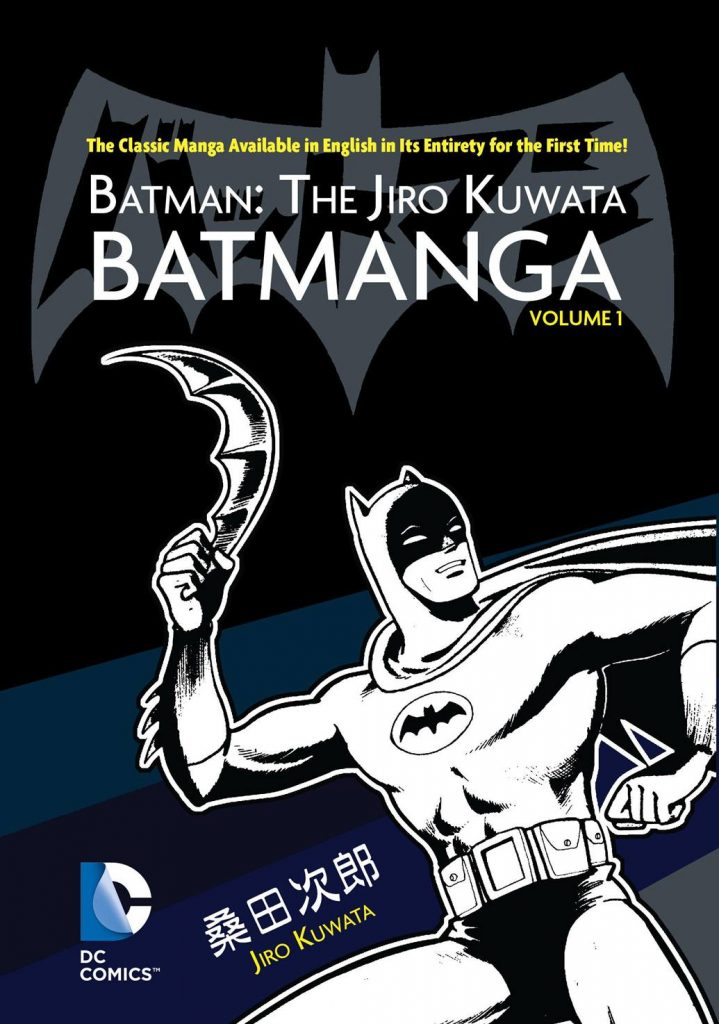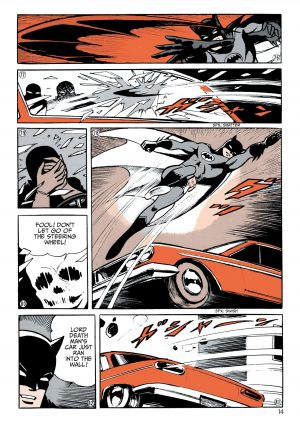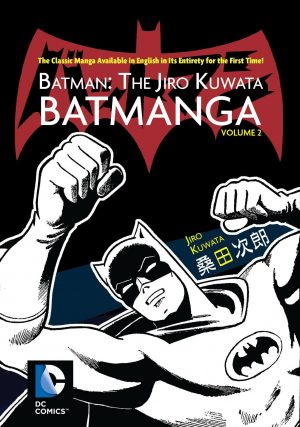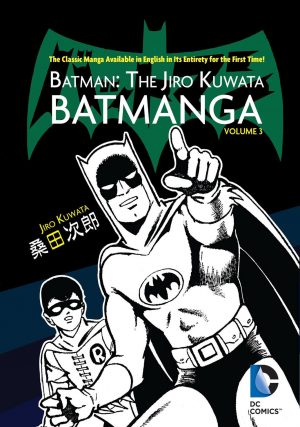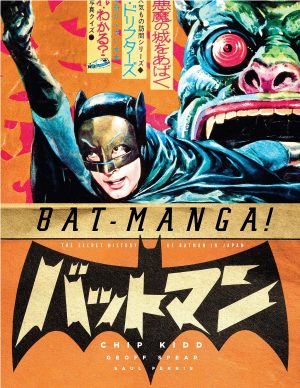Review by Frank Plowright
It wasn’t only in the USA that Adam West’s 1966 Batman TV show was a massive success. The phenomenon was global, but while publishers in other countries licensed DC Batman material to translate and reprint, in Japan they licensed the characters, and set Jiro Kuwata to work on producing new comics for the Japanese market. These were rediscovered by Chip Kidd, who published a selection as Bat-Manga in 2008, and in 2014 DC committed to reprinting Kuwata’s entire output over three volumes.
The contextualising commentary Kidd provided is absent, but Kuwata’s work speaks volumes without it. He was supplied with a batch of DC comics (listed in Volume 3’s afterword) and expected to rework them in Japanese style, but ultimately settled on creating his own stories, taking what he understood as the spirit of the DC material, and some of the villains. The pages read from right to left, and present the content in black and white, rather than with the eccentric colour scheme of the originals. In these, other shades replaced the black, although when a third colour is used, as in the orange of the opening Lord Death Man story, the use is retained.
Kuwata’s wild imagination is on show in every story, accompanied by a fast pace and an energetic approach. There are exceptions, but to anyone familiar with the DC characters of the mid 1960s the sources of Kuwata’s villains are largely apparent. Professor Gorilla is Gorilla Grodd, while Go-Go the Magician is instantly recognisable as another Flash foe the Weather Wizard. Others he modifies. Lord Death Man seems to be based on the Joker, a skull head replacing the white mask, but Kuwata’s twist is that he cannot be killed. He returns from the dead. Just as it’s possible to see how Kuwata’s altered the villains, he also uses the style of 1960s Batman stories, factoring in strange items such as a Mount Rushmore style Batman head on a cliff face, the widest cars ever seen in comics and a succession of nutty scientists. Visually his Batman and Robin are based on the anonymous artists whose work Bob Kane was signing in the USA, while most other aspects of the strip are the tidy 1960s manga style packing the panels on the page, as exemplified by Osamu Tezuka and others. It sometimes makes for a strange contrast.
In the manner of the TV show, which always presented a cliffhanger ending midway through its two episode stories, Kuwata generally opts for three chapters per story, so supplying two cliffhangers. These are initially tame, such as the Human Ball about to drop through the skylight, but Kuwata gradually taps into the TV show mood to have Batman suffocating in a block of ice or about to have his brain swapped with Professor Gorilla. The solutions are every bit as contrived as the TV show, and just as much fun.
The nuttiest story is saved until last, a melodramatic cerebral piece beginning with a man about to mutate into something beyond human, concerned about how he may harm humanity, an indicator of how Kuwata’s imagination flies further in Volume 2. Because this is such a bulky package a long read may be expected, but the tradition of Japanese comics is exactly the opposite, each chapter designed to be read quickly, so 360 pages pass relatively rapidly and entertainingly.
